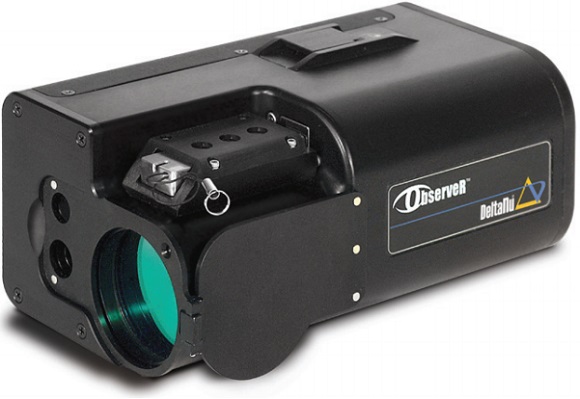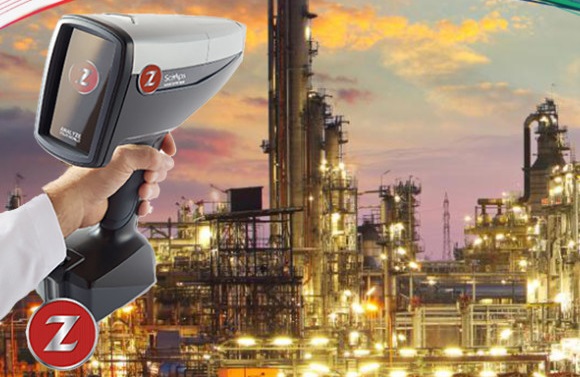Northern ANI Solutions

NIR is a highly flexible form of analysis, which can be applied to a broad range of research and industrial process applications. Long a staple technology in remote sensing, NIR reflectance spectroscopy has become popular within industrial markets as a cost-effective tool for measuring materials to optimize processes and manage costs. Capable of examining irregular surfaces with the same ease as a carefully prepared sample, NIR is non-destructive, and requires little or no sample preparation. It can also be used to analyze multiple constituents in a single scan. Combined with a calibration model, NIR analysis is a powerful tool for a multitude of applications. ASD spectrometer and spectroradiometer systems convert measured data into actionable information to help optimize processes or improve research. NIR reflectance spectroscopy is a method that makes use of the near infrared region of the electromagnetic spectrum (from about 700 to 2500 nanometers). Intermolecular hydrogen bondings and dipol interactions alter vibrational energy and thus lead to shifts in existing absorption bands or even the formation of new absorption bands. The fact that the spectra are strongly impacted by physical parameters (e.g., particle size, density, and moisture content) is the reason why NIRS is ideally suited for the capture of these characteristics. By measuring light scattered off of and through a sample, NIR reflectance spectra can be used to quickly determine a material’s properties without altering the sample. ASD has taken NIR technology a step further with the Goetz spectrometer, a hybrid system that uses a combination of visible and NIR regions (Vis/NIR) to include wavelengths from 350 nm to 2500 nm. The instruments have three separate spectrographs optimized for specific wavelength regions. This design features excellent stray light performance, high photometric sensitivity, and a rapid scan time not attainable by most traditional NIR instruments.
Common applications
Mining Exploration, Mining Production, Extractive Metallurgy, Field Spectroscopy, Ground Truthing, Spectral Remote Sensing, Crops and Soils Research, Ice Research and Snow Research, Landscape Ecology and Ecology Research, Airborne Remote Sensing Measurements, Atmospheric Remote Sensing Research, Climate Change Analysis and Bidirectional Reflectance Studies, Remote Sensing and Geology, Remote Sensing of Water, Spectroradiometry and Radiometric Calibration, Agriculture and Soil Analysis, Raw Material Inspection and Analysis, Forest Products, Pharmaceutical, Optics and Photonics, Moisture Analysis, Biofuels Analysis, Biomass Analysis, Natural Products and Dietary Supplements, General Chemical Analysis, Explosives Analysis and Identification, Food, Beverage and Dairy, Petroleam Products, Plasitics and Plastic Films, Cosmetics and Beauty Products.
Mining Exploration, Mining Production, Extractive Metallurgy, Field Spectroscopy, Ground Truthing, Spectral Remote Sensing, Crops and Soils Research, Ice Research and Snow Research, Landscape Ecology and Ecology Research, Airborne Remote Sensing Measurements, Atmospheric Remote Sensing Research, Climate Change Analysis and Bidirectional Reflectance Studies, Remote Sensing and Geology, Remote Sensing of Water, Spectroradiometry and Radiometric Calibration, Agriculture and Soil Analysis, Raw Material Inspection and Analysis, Forest Products, Pharmaceutical, Optics and Photonics, Moisture Analysis, Biofuels Analysis, Biomass Analysis, Natural Products and Dietary Supplements, General Chemical Analysis, Explosives Analysis and Identification, Food, Beverage and Dairy, Petroleam Products, Plasitics and Plastic Films, Cosmetics and Beauty Products.

Raman is a form of vibrational spectroscopy that measures the interaction of light with matter. In modern Raman instruments, laser light is used as the source and focused on a sample, the interaction causes atoms in molecules to vibrate, and the Raman scattered light is collected, and dispersed onto a detector. The Raman signal provides a unique molecular fingerprint of the material which is related to the chemical structure and physical state of sample. The most popular application is using this molecular fingerprint for material identification and qualification of materials . Samples identified by Raman spectroscopy includes many organic and inorganic substances where rapid and accurate testing is required. This can include plastics, pharmaceutical, food, agriculture, law enforcement and military. Applications include raw material/feedstock identification and qualification, sorting for recycling, gem and mineral identification, hazardous material testing (explosives and toxic chemicals), and narcotic testing, among others. These materials are measured in many forms including solids, liquids, emulsions, and gases. Modern systems are much smaller and allow measurements to be performed in the field.
Common applications
Pharmaceutical, Counterfeit Pharmaceuticals, Security, Law Enforcement & Forensics, Food Safety & Chemical Processing, Chemical Identification & HAZMAT, Academic Research & Teaching, Phthalates, Gem Authenticity & Synthetics.
Pharmaceutical, Counterfeit Pharmaceuticals, Security, Law Enforcement & Forensics, Food Safety & Chemical Processing, Chemical Identification & HAZMAT, Academic Research & Teaching, Phthalates, Gem Authenticity & Synthetics.

In the XRF Spectrometry technique elements in a sample can be identified. This occurs when high-energy X-ray photons are emitted from a source (X-ray tube) and strike the sample. The photons from the X-ray tube have enough energy to knock electrons out of the innermost orbital of atoms in the sample. When a high energy photon hits an atom, it may knock electrons out of inner orbitals. When this occurs, the atoms become ions, which are unstable. Electrons seek stability and the lowest possible energy state. Therefore, a more energetic electron from an outer orbital will move into the newly vacant space in the inner orbital. Electrons in outer shells have more energy then electrons in more inner orbitals. They need to release this excess energy as they drop down to fill the vacancy in the inner shell. This released energy is given off as a photon which can be detected by an x-ray detector. The energy of the emitted energy is equal to the difference in energies between the 2 orbitals and is characteristic of the element fluorescing.
Common applications
Alloys & Metals, Precious Metals, Mining & Geochemistry, Energy & Power, Petrochemical, Environmental Safety, Industrial Hygiene, Consumer Products Safety & RoHS, Education & Research, Scrap Sorting & Recycling, Material Science, Glass & Plastics, Pharmaceutical & Nutraceutical, Government & Security, Archaemetry, Academics, Fluids, Oils & Concentrates, Research & Development
Alloys & Metals, Precious Metals, Mining & Geochemistry, Energy & Power, Petrochemical, Environmental Safety, Industrial Hygiene, Consumer Products Safety & RoHS, Education & Research, Scrap Sorting & Recycling, Material Science, Glass & Plastics, Pharmaceutical & Nutraceutical, Government & Security, Archaemetry, Academics, Fluids, Oils & Concentrates, Research & Development

The Z is based on a well-established technology called laser induced breakdown spectroscopy (LIBS) or LIBZ as we like to call it. With LIBS, a laser is fired at a sample, heating it almost instantaneously and creating an electron plasma. As the plasma cools after about 1 us, the electrons return to the atoms that constitute the sample, emitting light at various discrete wavelengths. The spectrometer resolves the wavelengths and the processor determines elements present and concentrations. LIBZ is an optical technique, not x-ray. The measured light is in the UV, visible and NIR spectral region.Therefore many more elements can be analyzed compared to portable XRF. Elements hydrogen (H) to sodium (Na) may be measured by the Z, but cannot be measured by portable XRF. This includes critical elements like C, Li, Be, B, Na and others. The Z measures elements Mg, Si, Al at much lower detection limits, compared to portable XRF due to the optical nature of the technology. Laser-induced Breakdown Spectroscopy (LIBS) offers an alternative technique to both handheld XRF and spark OES for the analysis of a broad range of elements and sample types. In the LIBS process, a plasma is creat-ed at the material surface, as in spark optical emission spectroscopy (OES). Spectral lines from the various ele-ments present are measured as the plasma cools. The wavelength of specific lines reveals the elements pres-ent, and the intensity of the light at a given wavelength is related to the concentration of each element.
Common applications
Alloys & Metals, PMI, NDT, Oil & Gas, Plastics & Coatings, Research & Education, Scrap Sorting & Recycling, Laboratories, Pre-Screen Samples prior to Dilution for ICP, AAS and Regulatory Screening.
Alloys & Metals, PMI, NDT, Oil & Gas, Plastics & Coatings, Research & Education, Scrap Sorting & Recycling, Laboratories, Pre-Screen Samples prior to Dilution for ICP, AAS and Regulatory Screening.



